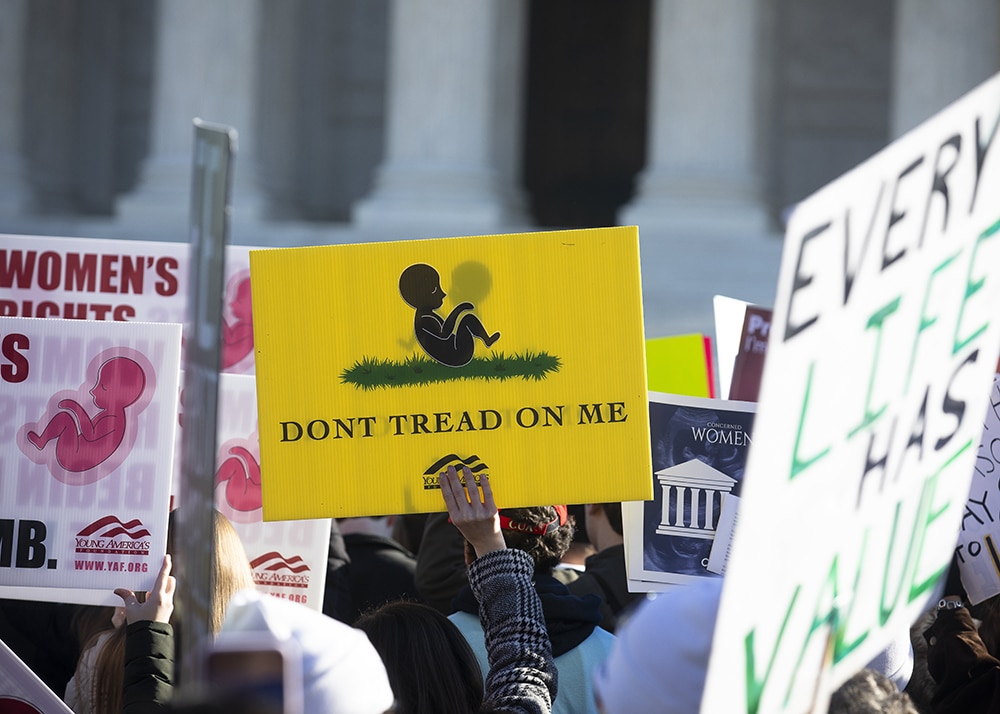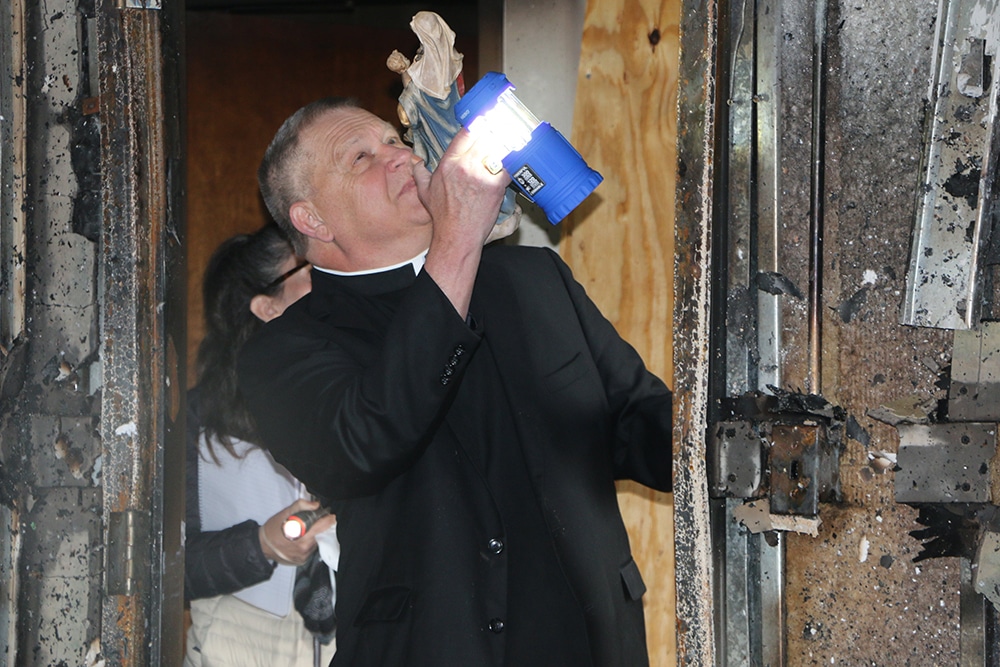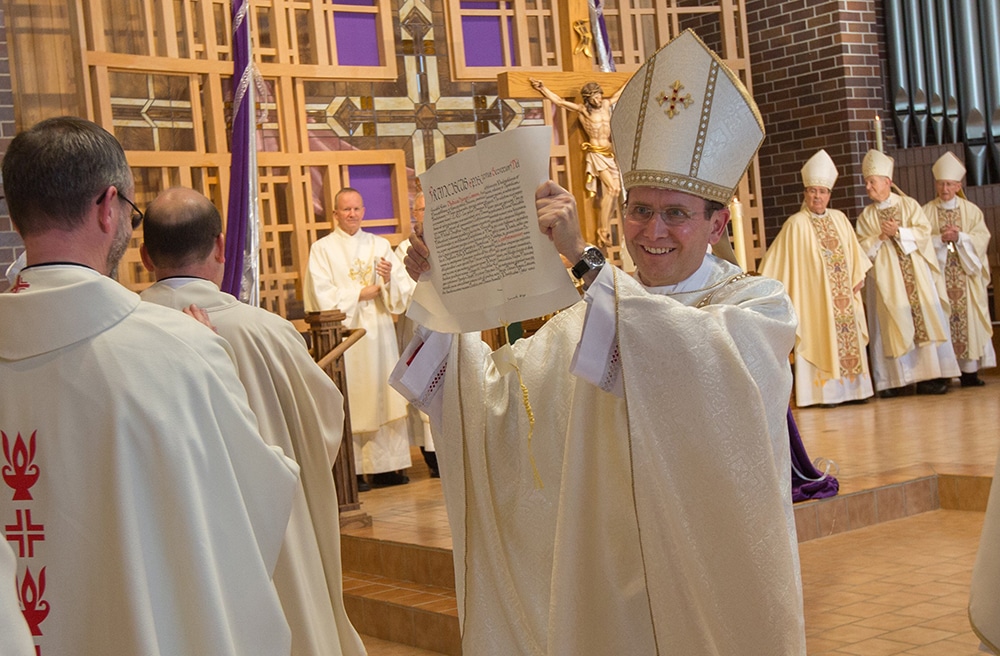It is a basic rule of court-watching and law-punditry that one should not assume that justices’ questions, or their silence, are definitive indicators of how they will vote on a particular case. That said, the oral arguments in the case of Dobbs v. Jackson Women’s Health Organization at the U.S. Supreme Court on Wednesday confirmed that the court should — and we should hope that they will — definitively correct its grave error in the 1973 decision in Roe v. Wade.
It has been almost 49 years since the justices invented — it is not plausible to say that they “interpreted” — a constitutional right to abortion. This asserted right was sweeping and near-absolute, and it had no basis in America’s law, traditions, history, practice or Constitution. The Roe error damaged our politics, distorted our jurisprudence and exposed millions of vulnerable people to violence.
Thirty years ago, in Planned Parenthood v. Casey, the justices reworked the abortion right, grounding it in “liberty” rather than “privacy,” even as a majority effectively conceded that Roe had been wrong. Rather than confess error, a group of swing justices concluded that institutional and reputational considerations required them to stick with the earlier mistake.
Right out of the gate in the Dobbs arguments, Scott Stewart, the solicitor general for the state of Mississippi, powerfully insisted that Roe and Casey “haunt our country” and should be overruled — not modified, or reworked, or reimagined, but overruled. He was right. Those decisions were wrongly decided, and there are no good reasons for perpetuating Roe’s judicial power-grab.
It has been almost 49 years since the justices invented — it is not plausible to say that they “interpreted” — a constitutional right to abortion. … The Roe error damaged our politics, distorted our jurisprudence and exposed millions of vulnerable people to violence.
To be sure, it makes sense for the court to value stability and predictability in the law. Sometimes, there are good reasons to carry on with a past mistake. And it is important that the court not only be perceived as, but in fact be, a judicial, not a merely political, institution. The meaning of the Constitution should not and does not change simply because its composition does.
The justices who are presumed to be Casey-defenders warned repeatedly, in their questioning, that to return the abortion-regulation question to the political process would damage the court, its standing and its reputation. In fact, the opposite is true: Were the justices to yield to political and media pressure and to concoct yet another abortion-regulation-evaluation mechanism with no basis in the Constitution’s text, their standing as an apolitical judicial body would suffer irrevocably.
It was striking that, with the exception of Justice Sonia Sotomayor, relatively little of the justices’ questioning seemed designed to defend the merits of Roe and Casey. The lawyers challenging the Mississippi law, however, did contend that the right to abortion was rooted in American history. This contention is unsupported. The fact that it was, in some places, in the 19th century, uncommon to criminally prosecute previability abortions as criminal homicides does not establish, or even indicate, that anyone believed there was a “right” to abortion.
Chief Justice John Roberts several times asked lawyers for both sides about the possibility of a “middle ground” compromise — that is, of a new rule that would preserve a constitutional abortion right while still permitting legislatures to ban some pre-“viability” abortions. And each time, lawyers on both sides of the case had to acknowledge that no such compromise is possible — or that any such compromise would be nonjudicial and lawless. After all, what constitutional principle or provision could support a new rule that abortion bans are now permitted at 15 weeks of pregnancy but not, say, 14 weeks?
Justice Brett Kavanaugh reminded the lawyers, and his colleagues, that a decision abandoning Roe and Casey would not “ban” abortion. Instead, it would return the tasks of line-drawing and interest-balancing to citizens and their representatives. Those who are pro-life must prepare for what is certain to happen — namely, that many states will continue with highly permissive abortion rules, regardless of what the justices decide in Dobbs. Resources and energy that have, for almost 50 years, been directed to righting the court’s wrongs must pour into policies, programs and initiatives that assist women in making the choice for life and that care for vulnerable families and children.
At one point during the arguments, Justice Sotomayor observed that many of the most famous cases where the court rejected past precedent involved expanding the rights of individuals. In her view, this fact weighed strongly against undoing the errors in Roe and Casey.
Her view is wrong, though, for at least two reasons. First, reversing Roe will respect the rights of individual citizens to have a say, and to try to convince their neighbors on a fundamental moral and policy question. Next, and no less important, the court’s confession of error would repair the damage done to our Constitution by its earlier ruling that excludes, categorically, the most vulnerable persons among us from the law’s protections. That would not be the end of the pro-life effort, but it would be a welcome step nonetheless.
Richard W. Garnett is the Paul J. Schierl/Fort Howard Corporation Professor of Law at the University of Notre Dame.







